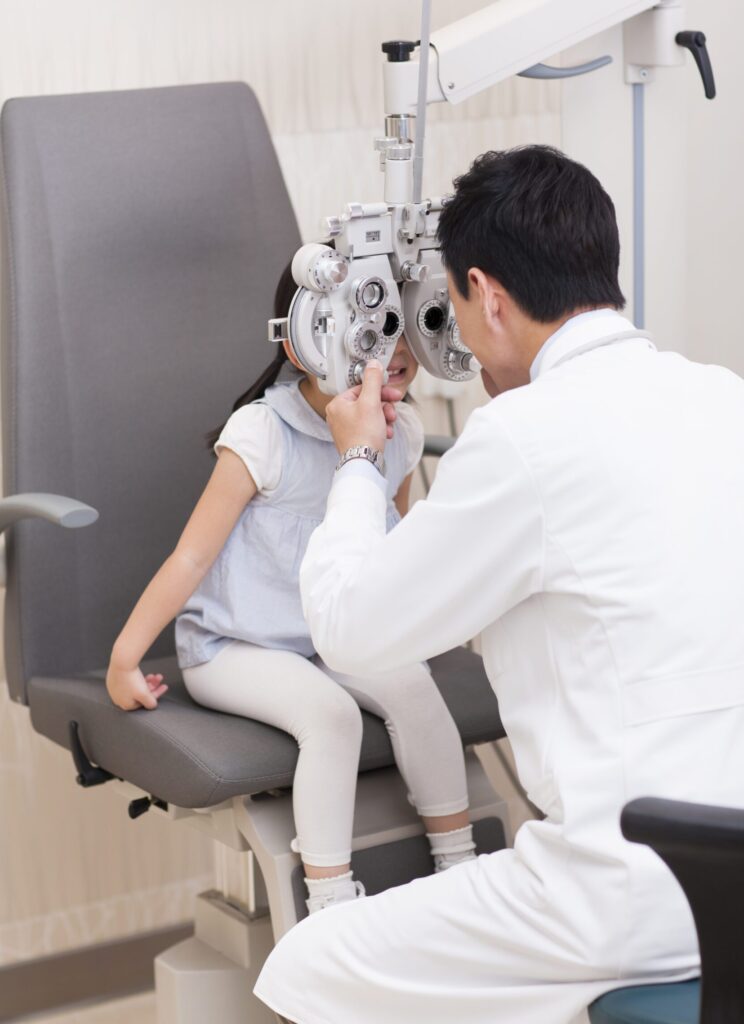Is Your Child’s Vision Getting Worse Each Year?
Expert Myopia Control & Treatment at Golden Vision
Slow down or stop your child’s nearsightedness from progressing.
Ready to Take Control of Myopia? Book an Appointment Today
Early intervention is key when it comes to slowing the progression of myopia. At Golden Vision, our experienced optometrists are ready to help you explore personalized treatment options, including myopia control glasses, Ortho-K, and MiSight lenses. We offer appointments at several convenient locations across California—including Arcadia, Cupertino, Dublin, Irvine, Milpitas, Rowland Heights, San Diego, San Francisco, and San Gabriel.
Choose the location nearest you and book your appointment today to take the first step toward clearer, healthier vision for your child.


What Is Myopia?
A vision condition where distant objects appear blurry
Typically begins in childhood and worsens with age
Caused by the eye growing too long, focusing light in front of the retina
Linked to increased risk of retinal detachment, glaucoma, and macular degeneration
Our Myopia Control Treatments
Ortho-K (Orthokeratology)
Specialty contact lenses worn overnight to gently reshape the cornea and provide clear vision during the day while slowing progression.
MiSight® Daily Contacts
FDA-approved soft lenses clinically proven to reduce myopia progression in children ages 8-12.
Atropine Eye Drops
Low-dose prescription drops used nightly to help slow eye growth and reduce worsening of myopia.
Glasses for Myopia Management
We offer advanced myopia management glasses, including lenses with specialized designs that can help slow the progression of nearsightedness in children. Our selection includes high-quality lenses that reduce visual strain and support better focus while allowing your child to see clearly and comfortably throughout the day.
Personalized Treatment Plans
We tailor each plan based on your child’s age, eye health, and lifestyle to ensure the best outcomes.

Why Families Choose Golden Vision
Pediatric eye care specialists experienced in myopia control
Latest diagnostic tools for tracking eye growth and prescription changes
Bilingual staff and insurance-friendly care
Trusted by families throughout California for over 20 years
Myopia Glasses Designed for Effective Control
In addition to advanced treatments like Ortho-K and MiSight lenses, Golden Vision offers specially designed myopia control glasses that help slow the progression of nearsightedness in children and young adults. These glasses use specially formulated lenses that reduce peripheral defocus—a key contributor to myopia progression—while providing clear central vision for daily activities.
Whether used on their own or alongside other treatments, myopia control glasses are a comfortable and convenient option for kids who are not ready for contact lenses or prefer a non-invasive solution. Learn more about our myopia control spectacles and how they work.

Real Results From Real Families
“Golden Vision helped us finally get control of our son’s vision. The changes were immediate — and he doesn’t complain about headaches anymore!”
Amy R
“We were nervous about Ortho-K, but the team explained everything so clearly. Now our daughter doesn’t need glasses during the day, and her vision hasn’t worsened in over a year.”
Daniel M.
FAQs About Myopia in Children
Genetics, prolonged near work (like reading or screens), and limited outdoor time are key contributors.
Earlier intervention is better. Many children start treatment between ages 6 and 12.
Severe myopia increases the risk of vision-threatening conditions like glaucoma and retinal detachment.Does insurance cover myopia control?

